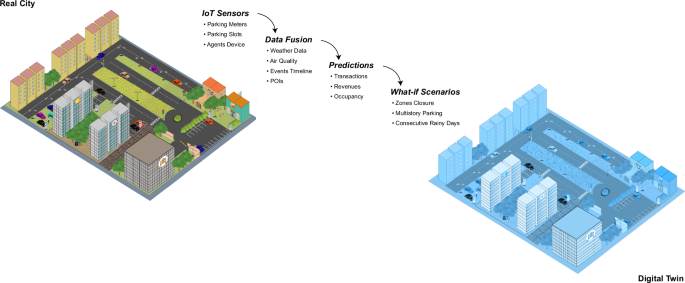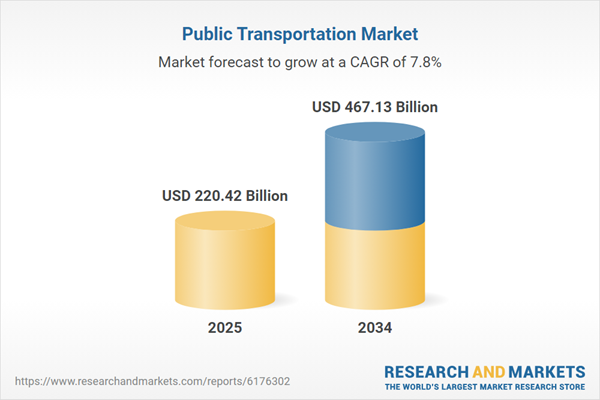Report on the ‘Future-Ready Leafy Greens’ Initiative and Alignment with Sustainable Development Goals
Introduction
A collaborative initiative by the Advanced Climate Technologies (ACT) group has been established to address significant operational and sustainability challenges in the greenhouse horticulture sector. This report details an educational event designed to equip growers of leafy greens with data-driven strategies that enhance production efficiency and align with key Sustainable Development Goals (SDGs). The primary focus is on integrating advanced technologies to improve resource management, crop quality, and overall sustainability in controlled environment agriculture.
Initiative Overview
The initiative is centered around a webinar titled “Future-Ready Leafy Greens: Smarter Strategies for Airflow, Light & Irrigation,” scheduled for November 5, 2025. The session is organized by the ACT group, a partnership of industry leaders committed to advancing sustainable agriculture through technological innovation.
- Svensson
- Priva
- Philips LED Lighting (Signify)
- Grodan
Core Objectives and Technological Focus
The program aims to provide growers with actionable knowledge to foster more resilient and resource-efficient production systems. The core objectives directly support the transition towards more sustainable agricultural practices, as outlined by the United Nations.
- Mitigation of crop deficiencies, such as tip burn, through optimized airflow and humidity control, thereby reducing food loss and improving product quality.
- Integration of lighting, irrigation, and climate management systems to achieve predictable and consistent yields, contributing to stable food supplies.
- Utilization of data analytics and sensor technology to increase production efficiency while minimizing the consumption of energy and water resources.
Expert Contributions to Sustainable Practices
Specialists from each partner organization will present strategies that directly contribute to sustainable production models.
- Philips LED Lighting: Focuses on moving from basic light recipes to fully integrated growth strategies using LED technology. This approach optimizes energy use for crop production, supporting SDG 7 (Affordable and Clean Energy) and SDG 12 (Responsible Consumption and Production).
- Svensson: Details how vertical airflow and climate screen strategies create a balanced microclimate. This reduces crop stress and the need for excessive resource inputs, aligning with SDG 12.
- Grodan: Explains how precision irrigation and fertigation, supported by sensor data, improve root-zone health and significantly enhance water-use efficiency, a key target of SDG 6 (Clean Water and Sanitation).
- Priva: Demonstrates how smart automation can unify control over temperature, humidity, and irrigation. This fosters innovation and resilient infrastructure (SDG 9) for consistent, high-quality crop production with minimal waste.
Direct Contributions to Sustainable Development Goals (SDGs)
The initiative’s focus on integrated, data-driven solutions provides a clear framework for advancing several SDGs within the horticultural industry. As noted by industry representatives, sustainability goals are becoming increasingly important for the sector’s long-term viability.
- SDG 2 (Zero Hunger): By improving crop consistency, quality, and yield, these strategies directly contribute to enhancing food production and strengthening food security.
- SDG 6 (Clean Water and Sanitation): The emphasis on precision irrigation and data-informed water management promotes the sustainable management of water resources by reducing waste.
- SDG 7 (Affordable and Clean Energy): The promotion of energy-efficient LED lighting and optimized climate control systems helps reduce the energy footprint of greenhouse operations.
- SDG 9 (Industry, Innovation, and Infrastructure): The initiative fosters the adoption of innovative technologies and smart automation, building a more resilient and sustainable agricultural infrastructure.
- SDG 12 (Responsible Consumption and Production): The core theme is achieving greater output with fewer inputs. This directly supports the goal of establishing sustainable production patterns by reducing energy, water, and nutrient waste.
- SDG 17 (Partnerships for the Goals): The ACT group itself exemplifies this goal, representing a multi-stakeholder partnership dedicated to sharing knowledge and technology to advance sustainable development in agriculture.
Conclusion
The “Future-Ready Leafy Greens” initiative serves as a critical platform for disseminating practical knowledge that aligns commercial horticulture with global sustainability targets. By focusing on the integration of climate, lighting, and irrigation technologies, the program equips growers with the necessary tools to improve both profitability and environmental performance, thereby contributing meaningfully to the Sustainable Development Goals.
Analysis of Sustainable Development Goals in the Article
1. Which SDGs are addressed or connected to the issues highlighted in the article?
The article discusses strategies for greenhouse growers to improve crop quality and resource efficiency, connecting to several Sustainable Development Goals (SDGs) focused on food security, sustainable resource management, and innovation.
-
SDG 2: Zero Hunger
The article’s core focus is on enhancing the production of leafy greens (“lettuce, arugula, and herbs”) by increasing yield, improving crop quality, and ensuring uniform growth. This directly supports the goal of ending hunger, achieving food security, and promoting sustainable agriculture.
-
SDG 6: Clean Water and Sanitation
The text explicitly mentions the need to reduce “water waste” and improve “water-use efficiency.” It highlights methods like “precision irrigation and fertigation control” supported by sensors, which are key strategies for the sustainable management of water resources in agriculture.
-
SDG 7: Affordable and Clean Energy
The article addresses the goal of energy efficiency by discussing strategies to “reduce energy… waste.” The focus on advanced technologies like “Philips LED Lighting” and integrated growth strategies implies a shift towards more energy-efficient production methods in horticulture.
-
SDG 9: Industry, Innovation, and Infrastructure
The entire premise of the webinar is to promote innovation and advanced technology in the greenhouse industry. It discusses “data-driven strategies,” “smart automation,” and integrating systems for lighting, irrigation, and climate control, which aligns with upgrading industries for sustainability and increased resource-use efficiency.
-
SDG 12: Responsible Consumption and Production
This SDG is central to the article’s message. The emphasis on “optimizing resources,” achieving “resource efficiency,” and reducing “energy and water waste” directly relates to ensuring sustainable production patterns. The article promotes a model of agriculture that produces more with fewer natural resources.
2. What specific targets under those SDGs can be identified based on the article’s content?
Based on the issues and solutions presented, the following specific SDG targets can be identified:
-
Target 2.4: Sustainable food production and resilient agricultural practices
The article promotes “smarter strategies” and “data-driven tools” to create resilient and sustainable food production systems in controlled environments. The goal is to “enhance crop quality, consistency, and resource efficiency,” which helps implement agricultural practices that increase productivity while being environmentally sound.
-
Target 6.4: Increase water-use efficiency
The content directly addresses this target by promoting “precision irrigation” and data-driven methods to improve “water-use efficiency” and “reduce… water waste” in greenhouse operations.
-
Target 7.3: Double the global rate of improvement in energy efficiency
The discussion on “reducing energy… waste” through integrated management and the use of modern technologies like LED lighting directly contributes to improving energy efficiency in the agricultural sector.
-
Target 9.4: Upgrade infrastructure and retrofit industries to make them sustainable
The article advocates for the adoption of “Advanced Climate Technologies,” including “smart automation,” sensors, and integrated systems. This represents a push to upgrade the greenhouse industry with clean, environmentally sound, and resource-efficient technologies.
-
Target 12.2: Achieve the sustainable management and efficient use of natural resources
The overarching theme of the webinar is to help growers “optimize resources” and achieve “resource efficiency.” By teaching methods to reduce energy and water consumption while increasing yield, the article directly supports the goal of using natural resources more sustainably.
3. Are there any indicators mentioned or implied in the article that can be used to measure progress towards the identified targets?
Yes, the article mentions or implies several indicators that can be used to measure progress:
-
Crop Yield and Quality
The article explicitly mentions the goal to “increase yield” and achieve “uniform growth” and “consistent, high-quality crops.” These outcomes are direct measures of agricultural productivity (relevant to Target 2.4).
-
Water-Use Efficiency
This is explicitly stated as a key performance indicator. Progress can be measured by tracking the amount of water used per unit of crop produced, which is a direct measure for Target 6.4.
-
Energy Consumption
The goal to “reduce energy… waste” implies that energy consumption is a key metric. Measuring the energy used per kilogram of produce would be an indicator of progress towards Target 7.3.
-
Adoption of Advanced Technologies
The promotion of “sensors,” “data-driven strategies,” and “smart automation” suggests that the rate of adoption of these technologies within the greenhouse industry is an indicator of progress towards Target 9.4.
-
Resource Efficiency
This is mentioned as a key goal. It can be measured by a composite indicator tracking the reduction in inputs (water, energy, fertilizer) relative to the output (crop yield), which is relevant for Target 12.2.
4. Summary Table of SDGs, Targets, and Indicators
| SDGs | Targets | Indicators |
|---|---|---|
| SDG 2: Zero Hunger | Target 2.4: Ensure sustainable food production systems and implement resilient agricultural practices. |
|
| SDG 6: Clean Water and Sanitation | Target 6.4: Substantially increase water-use efficiency across all sectors. |
|
| SDG 7: Affordable and Clean Energy | Target 7.3: Double the global rate of improvement in energy efficiency. |
|
| SDG 9: Industry, Innovation, and Infrastructure | Target 9.4: Upgrade infrastructure and retrofit industries to make them sustainable, with increased resource-use efficiency and greater adoption of clean and environmentally sound technologies. |
|
| SDG 12: Responsible Consumption and Production | Target 12.2: Achieve the sustainable management and efficient use of natural resources. |
|
Source: hortidaily.com







